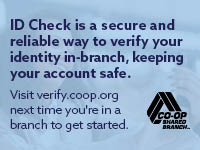In a previous post, we gave you tips on how to best do research for your new car. In this post, we will give you some smart financing tips.
You’ve decided that you can afford a new car. Now what? Follow these tips for smart financing:
- Explore your financing options—especially your credit union. A credit union tends to lend more money than a bank and generally offers more favorable rates. Credit unions also have arrangements with local dealerships, offering member-only sales.
- Do not give the dealership a credit application until you know for sure that you are going to finance through them. Make sure that you have exhausted all other sources including your local credit union. A little extra time shopping at your local credit union may save you a lot of money. If you do apply through the dealership, and then try to go somewhere else for your loan, you may find that you have a number of inquiries on your credit report. This makes it look like you weren’t approved for other loans and each lender thinks the others know something bad about you.
- If you finance at the dealership, never take delivery the same day. Pick up the car only once you know that the financing is absolutely final.
- Always check the dealer’s numbers carefully, and don’t sign the paperwork until you are positive that the numbers are correct. Remember, once you’ve signed, you rarely can get out of the deal.
Original Source: http://lmcu.frc.finresourcecenter.com/Finance_78857.html?article_id=21







